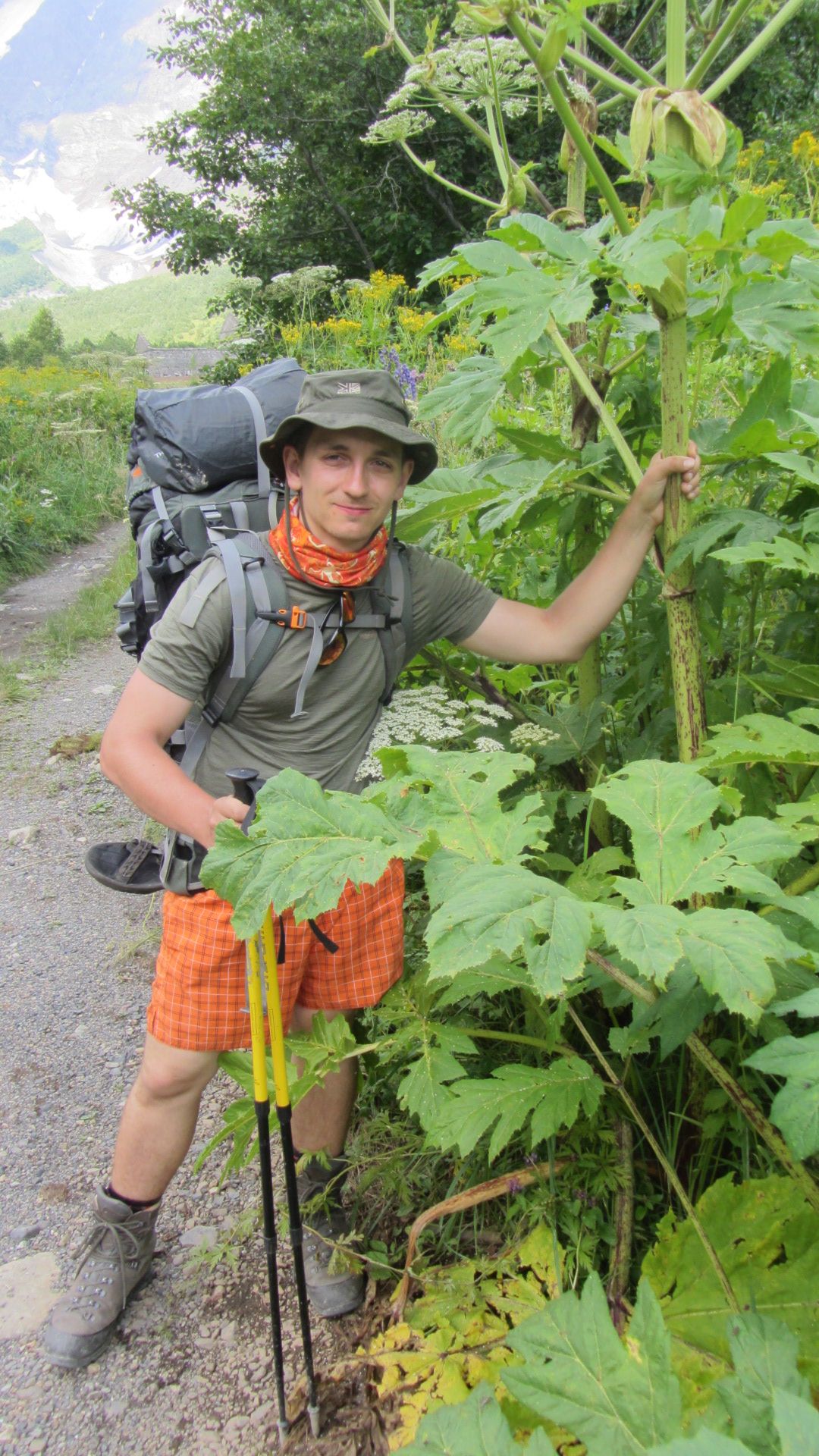

The giant hogweed (Heracleum Mantegazzianum) is the robust plant native to the Caucasus region. It can grow up to the height of 5 meters, even though 2-4m high specimens are much more common. It is distinguished by huge leaves and by a thick stem branches into clusters of small white flowers.
Hogweed was brought to the Europe as a decorative plant in 19th century and the locals have been trying to get rid of it even since. In the most of the world, it is considered to be an invasive species as it spreads very fast and often suppresses local vegetation. But that’s not the reason why hogweed made it to the list of Georgian hazards.
The greatest danger of hogweed lies in it phototoxic sap. If your skin gets in touch with it and is subsequently exposed to sunlight, you can be severely burned. And I mean really severely - I will not put it here, but if you are curious, just google “hogweed burns” (graphic content!).

Remember - don't touch the hogweed!
And because I want just to warn you, not to scare you - if you are just walking through fields of hogweeds, touching leaves and flowers, you should be fine. We crossed many and never got burned. But you really shouldn’t try to break it’s stem or cut it.
If you still get exposed to the plant sap, wash the affected spot immediately and cover it from the sunlight.

Giant hogweed
As you can see above, trekking in Georgia is not particularly risky compared to the rest of the world. Still, it would be reckless to travel without an insurance (I think you already see where is this going - I would be a very lousy travel blogger if I didn't try to sell you some travel insurance ). During the last 10 years I spent hiking and trekking, I used two insurances.
When I was younger, I used to have more time and could make several long trekking trips a year. My main priority was to protect myself and my relatives from unexpected costs. Because of this, I used to be a member of Austrian Alpine Club (Alpenverein). After paying the yearly membership fee of about 60 EUR, I got an insurance tailored for mountains which covered rescue costs, medical treatment as well as the repatriation costs (tho my parents didn´t look too relieved when I stressed this fact before travelling abroad).
Then my priorities shifted. Since I have a family now, I spend less time hiking and need an insurance which not only covers everything mentioned above but will also provide for them in case that something happens to me. Because of this, I started to look for more general insurance for specific dates. For my summer trekking trips, I use SafetyWing travel insurance since I am very satisfied with the coverage it offers for its cost.
SafetyWing also offers Remote Health - a more robust, full-fledged health insurance which, unlike their travel insurance covers also home country and pre-existing conditions and illnesses.
Disclaimer: Those SafetyWing links are the affiliates. That means that if you click it and buy some insurance from them, I will get a small comission. But that's not why I am promoting them, they simply look the best to me (compared it with local insurance companies as well as global ones such as World Nomads).

